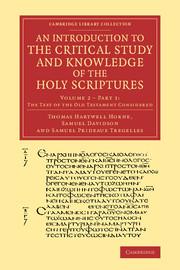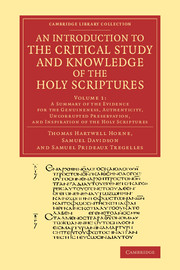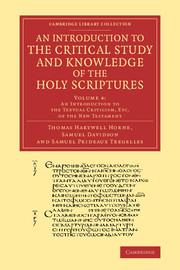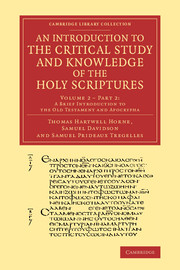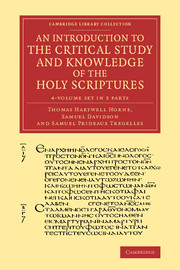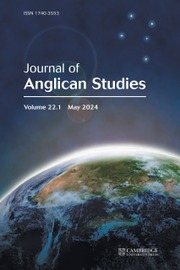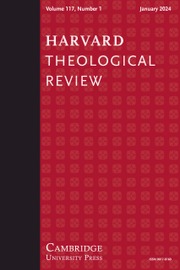An Introduction to the Critical Study and Knowledge of the Holy Scriptures
A painstaking compiler of catalogues and indexes, the biblical scholar and bibliographer Thomas Hartwell Horne (1780–1862) first published his most famous work in 1818, having begun his research for it many years earlier in 1801. Reissued here is the expanded four-volume tenth edition of 1856, which includes revisions by the scholars Samuel Davidson (c.1806–98) and Samuel Prideaux Tregelles (1813–75). This monumental and influential work of nineteenth-century biblical scholarship remains a valuable resource for modern researchers. Volume 2, the work of Davidson, addresses the Old Testament and has been split into two parts for this reissue. Influenced by contemporary German scholarship, Davidson's contribution caused controversy, particularly around prophetic authorship and the role of divine inspiration, resulting in his resignation from Lancashire Independent College. Indeed, Horne distanced himself from this volume. Part 1 includes discussion of scriptural Hebrew, of Greek, Arabic, Latin and Syriac translations, and of textual history and interpretation.
Product details
November 2013Paperback
9781108067737
612 pages
229 × 152 × 35 mm
0.88kg
Available
Table of Contents
- Preface
- Part I. Criticism of the Old Testament:
- 1. Preliminary
- 2. Languages of the Old Testament
- 3. The Hebrew characters
- 4. Hebrew vowel points
- 5. Hebrew accents
- 6. Means by which a knowledge of the Hebrew language may be acquired
- 7. Criticism of the text
- 8. History of the text itself
- 9. History of the printed text
- 10. Sources of criticism
- 11. The Septuagint translation
- 12. Other ancient Greek versions
- 13. Versions from the Septuagint
- 14. Venetian-Greek version
- 15. Targums
- 16. Old Syriac version
- 17. Arabic translations
- 18. Samaritan version of the Pentateuch
- 19. Vulgate version
- 20. Versions made from the Vulgate
- 21. Rules for using versions
- 22. Hebrew manuscripts
- 23. A few of the oldest MSS described
- 24. Parallel passages
- 25. Quotations
- 26. Critical conjectures
- 27. Application of the sources of criticism
- 28. Table of the quotations from the Old Testament in the New
- 29. Sources whence quotations were taken
- 30. Introductory formulas of quotations
- 31. On the external form of quotations
- 32. On the internal form of quotations
- Part II. Biblical Interpretation, Book 1:
- 1. Qualifications necessary to a good interpreter
- 2. Grammatical interpretation
- 3. Study of the text itself
- 4. Study of the context
- 5. Study of parallels
- 6. External sources of grammatical interpretation
- 7. Biblical exegesis
- 8. Examination of the passage itself
- 9. Examination of context
- 10. Parallels, or parallel passages
- 11. Analogy of faith
- 12. Ancient versions
- 13. On historical circumstances
- 14. External circumstances
- 15. On Jewish writings as aids in interpretation
- 16. Assistance derivable from the Greek fathers in the interpretation of scriptures
- 17. Limitations and cautions in the exegesis of the Bible
- 18. Commentaries
- Part II. Biblical Interpretation, Book II:
- 1. Interpretation of the figurative language of scripture
- 2. On the interpretation of the metonymies occurring in the scriptures
- 3. On the interpretation of scripture metaphors
- 4. Anthropopathy and personification
- 5. Allegory
- 6. On the interpretation of scripture parables
- 7. On the interpretation of scripture proverbs
- 8. The interpretation of the poetical parts of scripture
- 9. On the interpretation of types
- 10. On the interpretation of prophecy
- 11. On the doctrinal interpretation of scripture
- 12. On the moral interpretation of scripture
- 13. On the interpretation of the promises and threatenings of scripture
- 14. On the interpretation and means of harmonising passages of scripture which appear to be contradictory
- 15. On the inferential reading of scripture
- 16. On the practical reading of scripture.

